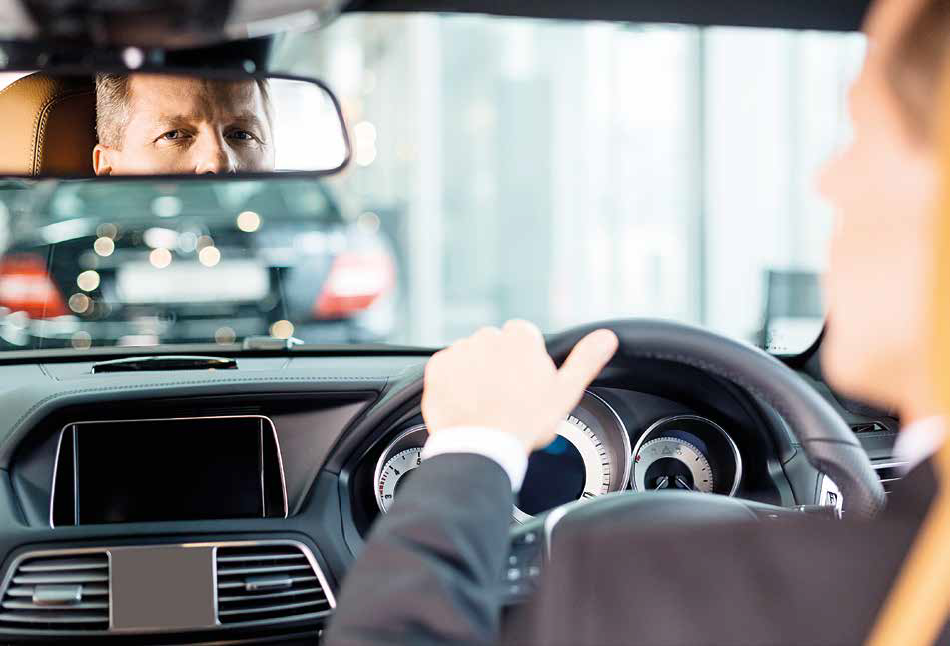Code of the road

Anticipation, awareness and smoothness – these are the qualities required when you step behind the wheel of a hearse or limousine. That’s the consensus of the students who attend the IFD College course which covers this important element of the funeral process.
College governor, trainer and assessor David Peasgood (pictured opposite) said: “During the classroom-based course we ask students what they think makes a good driver. It’s a good way to get useful information because most of the people that come to us will have been a hearse driver for some time.”
He illustrated how the three key characteristics combine when you are out on the road. “Each comes into play when, for example, you are driving a hearse as part of a cortege and pulling away from a junction or driving along the road and need to give way. There is awareness of other traffic and road conditions, as well the vehicles in your cortege.
And there is anticipation of what other road users, including cyclists and pedestrians, might do.
“When you pull out of a junction you can’t just slip into traffic; you must take things slowly and smoothly and make sure there is sufficient space so that following cars are able to stay with you.”
David acknowledged that the majority of other drivers are considerate when they meet a funeral party on the roadway; if they see a hearse pulling out with a limousine behind it they will allow the two to stay together.
He also pointed out that the skills needed by accomplished hearse and limousine drivers are much the same, though the situations they face are somewhat different. The limousine driver has the added element of contact with the bereaved family.
“The convention is that drivers don’t initiate conversations, but do respond to questions or comments from passengers. By the time someone becomes a driver they’ve usually had quite a bit of experience and will know how to conduct themselves with a bereaved family.
“They will also have spent quite a bit of time acting as a bearer being driven to and from the service, which gives them the chance to observe good practice, and see the standards of driving expected.”
Most ‘new’ drivers will have the chance to take a hearse or limousine on a trial run (or runs) before being asked to take on duties at a funeral. That may include practice at particularly tricky locations. As David pointed out, in some cemeteries space is limited and it can be difficult to manoeuvre large vehicles.
A hearse or limousine is not simply a means of transporting the bereaved and their family, it is part of the public face of your business; when you are in charge of such a high-profile vehicle impeccable standards need to be maintained.
“That influences the way you drive in many ways,” added David. “It is not the same as driving the family saloon to the local supermarket. For example, when you are driving a hearse or limousine you should use your indicators to the fullest – even to the extent that might be described as over-indicating.
“Above all, you want people who see the vehicle to recognise that the person in charge is conducting themselves in a very professional way.”
If unexpected events such as an accident or breakdown do occur every driver should be aware of the correct procedure.
“In my experience, the first thing that anyone should do is phone the office and let them know what’s happened so that arrangements can be made to get things sorted as soon as possible,” said David.
Limousine drivers face potentially different challenges; it could be that one of the party they are carrying becomes unwell, or due to the emotion of the event, passengers become distraught. To some extent, the response is dictated by the gravity of the situation, the length of the remaining journey, and whether the vehicle is part of a cortege.
“Generally, a limousine driver who was having a problem would try to alert the driver of the hearse in front and there would be a conductor there who would take charge of the situation,” said David.
Ultimately, you are on show and must drive and act accordingly. “There is no doubt that if people see a hearse drive down the street they will look at it. That’s why we always say to our drivers, conductors and bearers that they need to be professional and composed at all times.
“At first glance it might seem that being an accomplished hearse or limousine driver is straightforward, but the truth is there is a lot of good judgement involved. Some people take to it naturally and learn the necessary skills in a couple of weeks; with others it can take a considerably longer time.”
However long it takes, it’s important to master the code of the road.
Tags: David Peasgood, driver, driving, hearse, limousine, vehicle